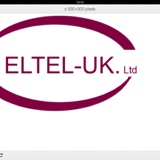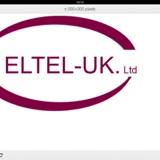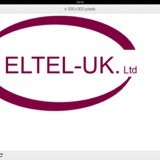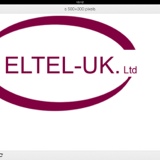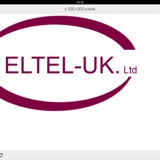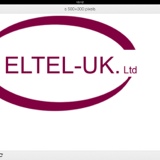Information
-
Document No.
-
Audit Title
-
Client / Site
-
Conducted on
-
Prepared by
-
Location
-
Personnel
-
Does the Site have a list of environmental aspects and impacts associated with its operations and activities? Does the list include normal, abnormal, and emergency scenarios? Is there a plan/schedule in place to update the aspect list over time?
-
Is staff aware of the environmental aspects of their job responsibilities? Are they aware of significance of these aspects and the resultant impacts if controls and monitoring programs are established?
-
Is there a list of legal and other requirements that are applicable to CBRE operations? Does the list outline how the requirements apply to the facility? Is there a plan/schedule in place to update the legal requirement list over time?
-
Is the facility aware of CBRE objectives and targets set? Have facility-specific objectives and targets been set? Are targets and timelines established and documented?
-
Have documented roles and responsibilities for environmental management been established and communicated at the facility level? (i.e. are job descriptions, procedures, organization charts etc. present?)
-
Does the site have a list of environmental training? Does that list outline training requirements by job position? Are records of completed training available upon request?
-
Are procedures in place to review and distribute environment-related communications from both internal and external sources?
-
Is access to the Corporate CBRE Environmental Management System Manual established?
-
Is a document control system in place to control site-specific documentation developed for the site?
-
Does the site have written and documented practices, procedures, or guidelines, etc. for control of environmental aspects of its operations?
-
Is there an emergency response plan available for the Site? Has training on the plan been provided? Has a drill of the plan or a component of the plan been conducted?
-
Have environmental monitoring programs been established, as required for key environmental aspects of CBRE's operations and activities?
-
Is environmental compliance periodically monitored at the site?
-
Is there a system in place to track and manage non-conformances and non-compliances identified and implement corrective and preventative actions?
-
Is there a procedure for record retention? Does it outline responsibilities, storage locations and timeline for record retention?
-
Is there an inventory of all sources of outdoor air emissions?
-
Are all sources of emissions to the air, under CBRE control, approved under an Environmental Compliance Approval (formerly a C of A) or registered (i.e. comfort heating equipment and standby power systems) as required? See Attachment A.
-
Are conditions of the ECA (Air) being met?
-
Is the facility aware that eligible systems currently covered by a C of A will need to be registered if a) a change is made to the activity that would have otherwise required an amendment to the approval or b) by Oct 31, 2016 (for heating and standby power systems).
-
For registered heating systems, are registration conditions met, and are records being kept for a minimum of 5 years? Note: equipment changes do not require re-registration if new equipment meets criteria. Attachment B.
-
For registered back-up power systems, are noise registration conditions met and records kept? Note: if a stand-by power system was previously included on a C of A, and is now registered, then this noise emissions requirement does not apply. Attachment B.
-
For registered stand-by power systems, are registration conditions met and records kept? Attachment B.
-
Has the site re-registered with non-equipment related changes to the facility as required, or, at a minimum of every 5 years at expiry?
-
Is the Site currently meeting the applicable standard limits for its contaminant discharges? See Attachment C.
-
Has the Site addressed the need to use the new approved models in accordance with the phase in schedule (Phase In of new Models Table - See Attachment D)?
-
Has the facility developed and maintained an Emission Summary and Dispersion Modeling (ESDM) Report in accordance with the phase-in periods in Attachment E, or for all new permitting applications submitted since November 2005? (This applies to new and existing facilities)
-
For all ESDM Reports developed as required by the Phase-In requirements, does the facility ensure that the ESDM Report is updated as required, or at minimum by Dec 31 of each year?
-
Is the most up-to-date ESDM report retained and made available upon requst?
-
Are there sources of emissions available which may have a potential adverse effect on points of reception located within a 500 meter radius? If so, state distance and direction from Site
-
Has the Site conducted a Noise Screening Analysis or Acoustic Assessment, by there own initiative or as part of an ECA Application?
-
Is the Site meeting the applicable noise limit criteria as per the Standard?
-
Does the facility meet NPRI reporting requirements? Note: must meet clause 1 and only one clause from 2-7
-
Has an NPRI report been filed by the June 1 deadline each year? (note: for 2011, the reporting deadline has been extended to June 29, 2012)
-
Are calculations to corroborate reporting status available and kept on Site for three years, as required?
-
Is there a discharge of any type of material that is not water off-Site?
-
Are there any withdrawals of water that are not approved by permit?
-
Are conditions of the permit being met?
-
Has the permit holder collected and recorded data on the volume of water taken daily and submitted the previous years data to the MOE by March 31st every year as per the defined implementation schedule?
-
Are all sewage works requiring approval (i.e. storm water management systems) covered under an ECA (formerly a C of A)? Note: Examples of "sewage works" include sump pumps for storm water transfer, storm water management ponds (wet/dry), interceptors and discharges to ground etc.
-
Does an exemption from requiring an ECA (formerly C of A sewage) apply for the Site? See Attachment F for exemption list.
-
Are conditions of the ECA (Sewage Works) being met?
-
Has the Site identified all discharge points on a facility sewer layout drawing?
-
Has the Site inventoried the types of wastewater discharges to the sanitary and storm sewer system?
-
Does the boiler blow down drain to the sanitary sewer?
-
Does CBRE sample sanitary and storm sewer effluent on a periodic basis?
-
Does the facility have a Sanitary Sewer Use or Surcharge Agreement?
-
Does the facility comply with the conditions of the Sanitary Sewer Use or Surcharge Agreement?
-
Does the facility discharge any contaminants to the storm sewer at concentrations in excess of allowable limit?
-
Does the facility discharge any contaminants to the storm sewer at concentrations in excess of allowable limit?
-
If required by the Sewer Use By-Law for the site, has the Site submitted a waste survey report or Pollution Prevention Plan (for City of Toronto / Mississauga etc)?
-
Does CBRE generate hazardous or hazardous industrial waste? If yes, what is the generator registration number? Note: list waste classes registered and the generator registration number for the site.
-
Was annual registration completed before the Feb 15 deadline?
-
Have all subject wastes on-Site been characterized appropriately and have records / evidence been maintained?
-
For each hazardous waste stream, has the Site completed Part 2A – in the HWIN system? Note: This applies only to hazardous waste streams. Waste classes ending in L, P, D are exempt from the Land Disposal Restrictions (LDR).
-
Has the Site annually completed Part 2B – LDR Notification Form on the HWIN system for EACH hazardous waste to be shipped off-Site? Note: if the hazardous waste is being disposed of on-Site, then a LDR Notification form is not required. Note: the Notification is required on or before the first transfer of the waste to the receiving facility.
-
If hazardous waste treatment is being conducted off-Site, have the following records been retained for a period of two years:<br>a) LDR Notification Form<br>b) Information including the name of the receiver and the date the LDR notification form was provided to the Receiver?
-
If hazardous waste treatment is being conducted on-Site, has the Site developed and implemented a Waste Analysis Plan that meets the requirement as per the regulation?
-
Are all Copy 1s of paper manifests being submitted to the MOE? (i.e. Review manifests and ensure no Copy 1 “white” copies are present)
-
Are records of the wastes generated at the facility for the past two years available for review?
-
Are copies of manifests returned by the receiver in time and matched as required? (i.e. Review to see that Copy 2 “green” is matched and attached to Copy 6 “brown”)
-
Are there any instances where the receipt of waste by a permitted receiver was not confirmed within 4 weeks of shipment?
-
Are all persons offering hazardous waste for transport adequately trained under the TDGA in the last 36 months?
-
Are wastes generated at the facility transported by licensed carriers only?
-
Has waste generated by the facility ever been refused by a receiver?
-
Is waste subject to the generator registration requirements of Regulation 347 stored on Site for no longer than 90 days unless a Notice of Storage of Subject Waste for the waste has been submitted to the MOE?
-
Is waste subject to the generator registration requirements of Regulation 347 stored on Site for a period exceeding 24 months, unless an application for a certificate of approval respecting the storage of that waste has been made, but is not yet approved?
-
If a facility generates and stores waste, does the Site store, handle, and maintain subject waste to prevent: leaks or spills of the waste; or damage to or deterioration of the container in which the waste is stored?
-
Does the Site have an ECA (formerly C of A) for waste processing activities on-Site including: <br>• On-Site combustion of municipal, hazardous, or liquid industrial waste;<br>• On-Site land application of municipal, hazardous, or liquid industrial waste; <br>• The mixing blending, bulking or intermingling of waste or other material with characteristic waste (corrosive waste, ignitable waste, leachate toxic waste, or reactive waste)or listed waste (acute hazardous waste chemical, hazardous industrial waste, a hazardous waste chemical, or severely toxic waste) which are subject to the LDR requirements; or<br>Processing of soil? <br>Note1: an ECA is not required:<br>a) if the processing will permit the waste to be land disposed; or<br>b) if the mixed, blended, bulked or otherwise intermingled waste is to be transported to a receiving facility which has an ECA for the processing practice and the generation facility has a document from the owner or operator of the receiving facility agreeing to accept the mixed, blended, bulked or otherwise intermingled waste. <br><br>Note 2: There is also an ECA exemption for waste-derived fuel sites, See Section 28.3 of the Regulation for more information, as applicable.<br>
-
Are the conditions of the ECA (formerly C of A) for waste processing activities being met?
-
Are potentially hazardous wastes including:<br>• Common mercury waste destined for a common mercury waste recovery facility;<br>• Intact waste batteries destined for a waste battery recovery facility; or<br>• Waste electrical and electronic equipment that is intact and is destined for a site at which it is to be processed for the recovery of materials;<br>collected and only transferred to the applicable waste recovery facility? <br><br>If yes, the waste is exempt from the waste registration and manifesting requirements under the Regulation.<br> If no, waste manifesting and registration requirements still apply.<br>
-
If yes, does the Site have a document from the owner or operator of the waste recovery facility or the waste hauler and/or transfer facility, as applicable, indicating that the owner or operator of the facility agrees to accept the waste?
-
Is the Site:<br>a) an educational institution and at any time during the calendar year, more than 350 persons are enrolled; or<br>b) an office building with more than 10,000 square metres of office space?<br>And as such subject to the waste auditing requirements?<br>
-
Has an initial Waste Audit and annual updates been conducted at this facility? Please note: current Waste audits, from 2009 forward, should be formatted in accordance with the new MOE template.
-
Has a Waste Reduction Workplan been prepared for this facility?<br>Note: the Plan should include targets and timelines
-
Has a Source Separation Program been implemented at this facility? If so, list recyclables and names of waste haulers.
-
Have summaries of the Waste Reduction Workplans been signed by senior management and posted for communication to employees as required?
-
Does the Site have an inventory of all ODS-containing equipment (i.e. refrigerant or Halon-containing equipment)?
-
Is any refrigerant-containing equipment serviced and/or tested by licensed technicians only?
-
Have leak tests been conducted on equipment and, if yes, has notice been affixed to equipment after testing?
-
Are posted notices only removed from equipment when they are replaced by a new notice?
-
Are service records issued kept on-Site for a period of two years from the date of issuance?
-
Is ODS equipment refilled with refrigerant containing chlorofluorocarbons (i.e. R-11, R-12, R-13, Freon 10)?
-
Has the Site refilled a chiller with a refrigerant containing chloroflurocarbons? If yes, has the chiller undergone a major overhaul and has the Site submitted a notice to the Director before January 1, 2009?
-
Has empty equipment been labelled as such?
-
Are refrigerant containers disposed of appropriately?
-
Have discharges of 100 kg or more of refrigerants to the environment been reported to the MOE?
-
Have discharges of 100 kg or less of refrigerants to the environment been reported to the Regional HSSE Manager?
-
Is the discharge of Halon for fire suppression purposes only?
-
Is the storage of Halon restricted to allowable situations?
-
Has any halon been added to equipment manufactured after January, 1995? If yes, has a written notice been submitted within 7 days?
-
Is the inspection or recovery of Halon performed by certified persons?
-
Is the facility using equipment containing PCBs in a concentration of 500 ppm or more? Note: no equipment in use may contain 500 ppm or greater after December 31, 2009, unless an extension has been granted.
-
Is the facility using equipment containing PCBs in a concentration of at least 50 ppm, but less than 500 ppm? Note: equipment containing PCBs in a concentration of at least 50 mg/kg but less than 500 mg/kg must be disposed of by, <br>(i) December 31, 2009, if the equipment is located at a drinking water treatment plant or food or feed processing plant, in a child care facility, preschool, primary school, secondary school, hospital or senior citizens' care facility or on the property on which the plant or facility is located and within 100 m of it, and <br>(ii) December 31, 2025, if the equipment is located at any other place.
-
Is the facility using light ballasts or pole-top transformers in a concentration of at least 50 ppm? Note: equipment containing PCBs in a concentration of 50 mg/kg or more must be disposed of by December 31, 2025, if the equipment includes <br>(a) light ballasts; and <br>(b) pole-top electrical transformers and their pole-top auxiliary electrical equipment.
-
Are PCBs stored on-Site for more than 1 year?
-
Is the storage site located within 100 m of drinking water treatment plant, food/feed processing plant, daycare/senior citizens facility, school, or hospital? Note: Storage site can not be located within 100 m of these facilities.
-
If there is an on-Site PCB storage Site, is access to the PCB storage site restricted/locked or guarded?
-
Are all PCBs stored in appropriate containers? See Attachment G.
-
Are the floors in the PCB storage area impervious?
-
Are the floor drains in the PCB storage area sealed or connected to a drainage system that terminates at a location that can be cleaned in the case of a spill?
-
Is the PCB storage area provided with adequate containment? See Attachment H.
-
Is the fire protections and emergency procedures plan for the PCB storage area available for review? Note: the plan must be updated and tested once per year, a written copy of the latest plan must be kept at the PCB storage site and another at their principal place of business, and the latest plan must be made readily available to persons who implement the plan and to the local fire department or to the local officer appointed by the provincial Fire Marshall if there is no local fire department or to any other local authority responsible for fire protection.
-
Are the records of (monthly) inspections and the detailed checklist available for review?
-
Are the PCB storage containers labelled appropriately?
-
Has a report been prepared current to December 31 in each calendar year, containing all of the required information?
-
Has the report, as mentioned above, been submitted to the Minister on or before March 31 of the following year for which the report was made?
-
Has there been a spill of PCBs into the environment?
-
If flammable / combustible liquids (FL/CL) are stored for use on-Site, are the containers for FL/CL kept closed when not in use? Note: containers are defined as small storage vessels (e.g. bottles, jugs, etc.) and drums but do not include tanks.
-
Are any FL/CL containers stored in or adjacent to exits or access to exits?
-
Is the FL/CL storage area kept free of combustible materials not essential to operations?
-
Are containers containing FL/CL clearly labelled and marked?
-
Has spill control been provided for flammable liquid or combustible liquid? If so, what measures are in place to contain the spill?
-
Are absorbent spill clean-up materials available for flammable liquid or combustible liquid?
-
Is the spill procedure prominently posted and maintained in areas where flammable liquid or combustible liquid are kept or handled?
-
Is the spill procedure approved by the Fire Department?
-
Is adequate spill response training provided for personnel involved in the handling/use of flammable liquid or combustible liquid?
-
Are any flammables located on Site properly grounded?
-
Are flammable liquid or combustible liquid containers arranged in such a way as to maximize stability of the product?
-
Are flammable storage rooms constructed to meet spill control, ventilation, storage, dispensing, and explosion venting requirements?
-
Are containers / drums of chemicals / oils stored away from high traffic areas, floor drains and means of egress from the Site? Or are containers / drums provided with secondary containment?
-
Does the Site maintain an inventory of all fuel storage tanks systems at the facility?
-
For fuel-oil storage systems, is the person who installs or repairs or removes fuel oil appliances or equipment certified according to Ontario Regulation 215/01 or 216/01?
-
Has the owner of the tank evaluated or inspected each tank at least once every 10 years?
-
For fuel-oil storage systems, are any USTs receiving fuel properly registered?
-
Are ASTs provided with adequate protection from failure loss and collision?
-
For fuel oil ASTs storage systems, are tanks adequately supported to prevent settling?
-
Are all ASTs installed to accessible for inspection? Are all single walled or double walled tanks without interstitial monitoring installed so that there is at least 460 mm (18 in) clearance along one side and one end of the tank?
-
For fuel-oil storage systems, do any unenclosed ASTs installed inside a building exceed maximum allowed capacity? See Attachment I.
-
For fuel-oil storage systems, do any enclosed ASTs installed inside a building exceed maximum allowed capacity? See Attachment J.
-
For fuel-oil storage systems, are outdoor ASTs over 2,500L installed the appropriate distance from structures? See Attachment K.
-
For fuel-oil AST storage systems, are tanks provided with adequate secondary containment? See Attachment L.
-
For outdoor fuel-oil ASTs greater than 2,500L, are secondary containment units inspected weekly and a record of that inspection maintained for the life of the tank?
-
Have any ASTs installed on-site and out-of-service for more than 180 days been emptied and made vapour free? Have all tanks out-of-service for greater than 3 years been removed?
-
For fuel-oil storage systems, are tanks provided with an appropriate level gauge or means of fuel level measurement? Note: dipstick readings are not allowed inside a building.
-
For fuel-oil storage systems, are ASTs provided with appropriate vent pipes? – See Attachment M.
-
Are all unused openings on ASTs and USTs sealed vapour and liquid tight?
-
For fuel-oil AST and UST storage systems, are all tanks provided with appropriate fill pipes and overfill protection (i.e. funnels, gauges, vent whistles)?
-
For fuel-oil storage systems, are USTs located with adequate separation from buildings, property lines and other tanks? Note: An underground tank shall not be installed<br>(a) inside or under any building;<br>(b) less than 1 m (3 ft) from a building;<br>(c) less than 600 mm (24 in) from an adjacent underground tank;<br>(d) less than 1.5 m (5 ft) from a property line;<br>(e) less than 15 m (50 ft) from drilled wells;<br>(f) less than 30 m (100 ft) from a dug well or waterway; and<br>(g) in such a way that the loads carried by a building foundation or supports could be transmitted to the tank.<br>
-
For fuel-oil storage systems, are USTs adequately protected from vehicular traffic?
-
For fuel-oil storage systems, are USTs provided with adequate corrosion protection/leak detection? Is the corrosion protection system tested bi-annually? Is the Leak detection system tested annually? Are records maintained?
-
Is UST piping provided with secondary containment and a leak detection system, as required? See Attachment N for details and exceptions.
-
Have any fuel oil USTs installed on-site and out-of-service for more than 180 days been emptied and made vapour free? Have all tanks out-of-service for greater than 2 years been removed?
-
For motive fuel systems, is the person who installs or repairs or removes liquid fuels appliances or equipment licensed?
-
Is the facility operated as a retail outlet, card/keylock facility, marina or bulk plant? If yes, has a license to operate that facility been obtained?
-
For motive fuel and bulk oil storage systems, have all spills or leaks to the environment or inside the plant been reported to the MOE Director and/or the licence holder, as applicable?
-
Does motive fuel dispensing equipment hose length meet specifications? Note: may not exceed a length of 4.6 meters unless a retracting mechanism is used, in which case, the maximum hose length shall not exceed 10 meters.
-
For mobile fuelling, does dispensing operation and equipment comply with location requirements? Note: <br>Dispensing shall not take place (a) within a building, (b) 30 m of a stream, river, lake, canal or natural watercourse, (c) 3 meters of a property line; (d) 3 meters of a highway except when requested to do so by an emergency service provider; (e) 4.5 meters of any opening in a building; (f) 3 meters from any ignition source.<br>
-
Are tanks installed in accordance with S630 or API Std 650 inspected externally every five years? If the tank does not have a double bottom, has it been internally inspected every 10 years? Are records of inspections maintained?
-
Does the motive fuel handling facility have adequate emergency procedures in place? Are employees trained?
-
Does the motive fuel storage facility have the correct number of fire extinguishers? Note: two should be available within the immediate vicinity of the tank.
-
For motive fuel storage systems (>5,000 litres capacity), are ASTs installed provided with adequate secondary containment? Note: If the tank is <5000 L, then containment is not required as long as product lost will not reach the outdoors, water sources, sewers, or pose a H&S risk.
-
Are secondary containment systems for motive fuel ASTs adequately maintained? (i.e. no water or product build-up is evident and the containment is not being used for storage of other materials).
-
Is motive fuel dispensing equipment provided with adequate ignition control support and signage? Note: Signage must be at least 20cmx28cm, state “No smoking – turn off ignition” or have such symbols in place. Ignition sources must be greater than 3 metres away.
-
For motive fuel storage systems, are all ASTs and piping provided with adequate labelling?
-
For motive fuel storage systems, are ASTs provided with adequate corrosion protection/leak detection? Note: tank in dyke – weekly inspection of containment or inventory reconciliation; double-walled with interstitial space – ongoing inspection of containment.
-
For motive fuel storage systems, is the facility maintaining documented inspections of the AST system?
-
Are all motive fuel steel ASTs provided with adequate rust protection?
-
For motive fuel storage systems, are ASTs adequately protected from vehicular traffic?
-
For motive fuel storage systems, are ASTs provided with appropriate vent pipes? Note: Vents for aboveground storage tanks, except for tanks certified to meet the requirements of ULC Standard S643, shall be not less than 2 meters for Class II products and 3.5 meters for Class I products, above grade level. Also vents should terminate greater than 3 m from any building opening and 1.5 m from any flat roof.
-
Have any ASTs for motive fuel storage installed on-site and out-of-service for less than 180 days been closed, locked, monitored and gauged monthly?
-
Have any ASTs for motive fuel storage installed on-site and out-of-service for more than 180 days been closed, locked, and emptied? Have all tanks out-of-service for greater than 2 years been removed?
-
Do motive fuel ASTs rest on non-combustible supports?
-
Is product only transferred from a top outlet of an AST, unless the AST is located in a dike?
-
For motive fuel storage systems (ASTs & USTs), are all tanks provided with appropriate fill pipes and overfill protection? See Attachment O.
-
With regards to motive fuel storage tanks, are vent pipes for ASTs and USTs adequate in terms of height and design? See Attachment P.
-
For motive fuel storage systems, are USTs located with adequate separation from buildings, property lines and other tanks? Note: An underground storage tank shall not be installed,<br>a) inside or under any building,<br>b) less than 1 metre from a building,<br>c) less than 1.5 metres from a property line,<br>d) less than 60 centimetres from an adjacent underground storage tank,<br>e) less than 15 metres from drilled water wells,<br>f) less than 30 metres from a dug water well or waterway, and<br>g) so that the loads carried by a building foundation or supports could be transmitted to the<br>tank.
-
Is motive fuel underground piping in direct contact with backfill, with exception to vent lines and vertical fill pipes, provided with corrosion protection?
-
For motive fuel storage systems, are USTs provided with adequate corrosion protection/leak detection? Note: single walled – inventory reconciliation weekly and precision leak tests, every 5 years; double walled – secondary containment monitoring
-
Have any motive fuel USTs installed on-site and out-of-service for more than 180 days been emptied, made vapour free, secure and locked? Have all tanks out-of-service for greater than 2 years been removed?
-
For card lock/key lock facilities, are requirements met for training, separation distance and emergency shut-off?
-
Have all spills that require reporting been reported to the MOE Spills Action Centre (SAC)?
-
Has the Site reported to the MOE all spills to the natural environment (since September 2007) unless otherwise exempted under Reg 675/98 OR have they invoked the spill contingency plan exemption?
-
Do records of reportable or non-reportable spills include the required information?
-
Are spill records retained on-Site for a minimum of two years after the spill?
-
Has the facility assembled and trained a spill response team?
-
Are spill kits located on-Site and provided with contents lists?
-
Are documented inspections of spill kits conducted on a monthly basis?
-
Is an Emergency Contact List that includes corporate contacts, available, posted and up-to-date?
-
Is the Spill Response Plan subjected to a documented review on an annual basis?
-
Have contractors hired for landscaping purposes who apply pesticides and herbicides obtained an operator’s license, which authorizes them to use the product, and adhere to prescribed safety procedures? Note:<br>If hired contractors do not use any of the pesticides that are not listed in the Schedules of the Regulation or do not contain a chemical or microbial agent, they do not require a license.<br>
-
Has a review of the Ontario Species at Risk list been conducted to determine whether the potential exists for these species to be present on-Site?
-
If so, have you contacted ORC to determine whether any CBRE activities require additional operational controls to comply with any existing species management plans or recovery strategies?
